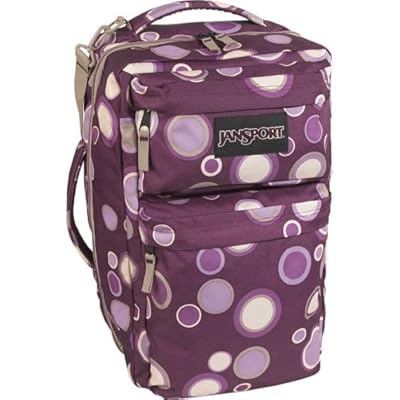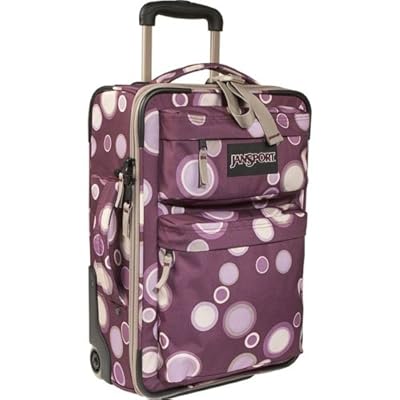I was going through my morning e-mail and noticed a summer luggage sale announcement from an online bag seller. The e-mail’s subject title said something like, “Save Big for Summer Travel,” enticing me to see what sort of wonderful bargains I could find.
The e-mail listed the seller’s top recommendations for bags for summer travel. All but one were for rolling uprights (and the tenth in that top 10 list were packing cubes and pouches with the seller’s inhouse brand).
The wheels and handlebars of rolling uprights make moving around an airport with them a breeze, but the convenience comes at a stiff price. To me, rolling uprights are the SUVs of the luggage market. You might have a nice ride, but is it really worth paying $5.00 a gallon when you only get 15 miles per gallon?
Let’s take a look at what’s wrong—and outdated—about rolling uprights in today’s travel environment:
- The wheel-and-handle mechanism adds substantial weight to a carryon.
- The wheel-and-handle mechanism sacrifices internal capacity.
- Most rolling uprights don’t come with shoulder straps or even D-rings on the ends on which to snap a shoulder strap to; if you need to quickly walk up the stairs you are in for a real workout.
- The wheel-and-handle mechanism makes rolling uprights almost impossible to stow under a seat.
- The firm shape of most rolling uprights make them almost impossible to squeeze into a crowded overhead bin. No overhead bin space? Wave your precious carryon good-bye as the flight attendant hangs a check-in luggage tag on it.
To get an idea of just how much you are giving up for those wheels, let’s compare two very similar bags: the JanSport Weekaway convertible travelpack, and the JanSport 19″ Upright rolling carryon. Both are part of JanSport’s popular SuperBreak series. They make comparing the formats easy since the two are nearly identical, except that the Weekaway has stowable backpack straps, and the Upright has the wheels and telescoping handle.
If you were to place these two bags side by side, they would almost be identical in size. The main difference you’d notice is that when empty, the Weekaway deflates into almost complete flatness, while the Upright maintains its shape due to its firmer skeletal structure.


The Jansport’s Weekaway convertible travelpack on the left, compared to Jansport’s 19″ Upright model on the right.
JanSport Weekaway travelpack specifications:
- Fabric: 600 Denier Polyester
- Weight: 2 pounds 4 ounces (1.0 kilogram)
- Dimensions: 20″h x 12″w x 8.5″d
- Capacity: 2700 cubic inches (44.2 liters)
JanSport 19″ Upright specifications:
- Fabric: 600 Denier Polyester
- Weight: 6 pounds 1 ounce (2.8 kilograms)
- Dimensions: 19″h x 13″w x 9″d
- Capacity: 1900 cubic inches (31.1 liters)
Take a look at their weight. The Weekaway weighs a tad under two-and-a-half pounds while the Upright weighs over six pounds—yup, the wheel mechanism adds almost four pounds to the Upright. Not all convertible travelpacks are as light as the Weekaway, since most use the heavier Cordura than the lightweight denier polyester of JanSport’s SuperBreak series of bags—but what matters here is the actual weight difference between the two, since the extra weight comes almost completely from the wheel-and-handle mechanism.
Finally, compare their capacity. The Weekaway can carry 2700 cubic inches, while the Upright can only carry 1900. The 800-cubic-inch difference is specifically due to the wheel and handle mechanism:
The convenience of wheeled luggage is costing you a third of your carryon space. This difference is startling.
There’s a reason automobile dealerships are having difficulty selling their behemoth SUVs this year. A lot of people have wisened up to the need to be more economical, choosing instead to go with a lighter vehicle that sips gas.
If you are traveling by air this year and you are trying to pare down what you pack and figuring out what to leave at home, take a moment to consider what you’re going to pack your stuff in. Unless you have physical limitations such as a bad back that makes wearing backpack-type straps uncomfortable, consider leaving your rolling uprights at home and dust off that old convertible travelpack you bought 10 years ago.
You are right on with all your comments. However, there is something very fishy about the dimensions. I find this all the time on line. Typos in the dimensions. The interior cubic feet can’t be larger than the dimensions. Most manufacturers use the outer dimensions which is misleading. And in this case it seems someone made a typo. You take the 20 x 12 x 8.5 which works out to 2040. Don’t know where they are getting those extra 660 cubic inches. Perhaps they count the outer pockets, but then both cases LOOK like they have the same pocket arrangement/size. I frequently send luggage bought on line back unless I can find a local store that carries it and I can actually look at it. I take what I pack with (I use packing cubes and ziplocks) and try it out in the store. Yes, I’m insane. But I unfortunately am one with a bad shoulder and I can’t use backpacks. I’m stuck with wheels – and they have ALL the disadvantages that you state. So I try to get the lightest I can find that will take my stuff. When traveling by car I use un-wheeled and I put the same stuff in and have at least 20% more room than the wheeled luggage with the same exterior dimensions.
Have always loved your site and very happy to see you back!!!!
Penny — Thanks for your insightful comments about the bags I used in my example. As it turns out, I was at a travel store earlier this afternoon, and got to personally inspect the JanSport Weekaway bag. Although it doesn’t feel nearly as sturdy as some other brands (like the MLC from Patagonia), the bag was absolutely adorable, and light as a feather! If anyone is looking for something besides the plain and dull, I recommend this one.